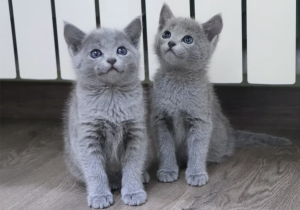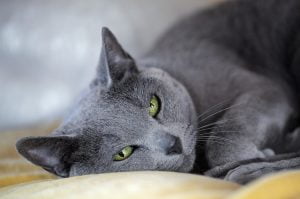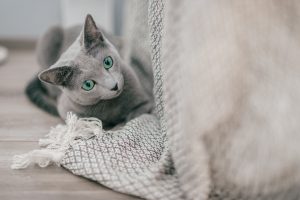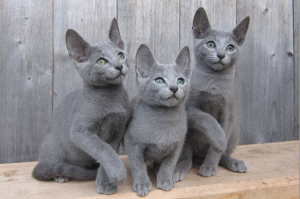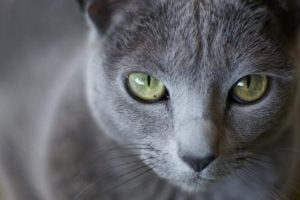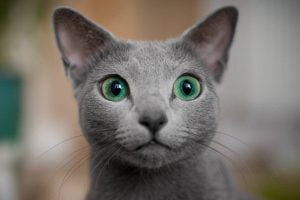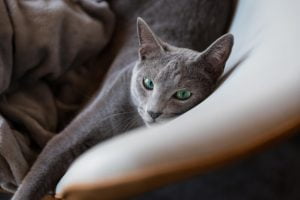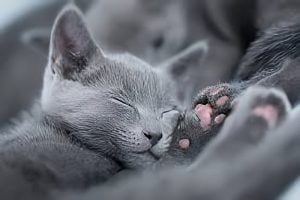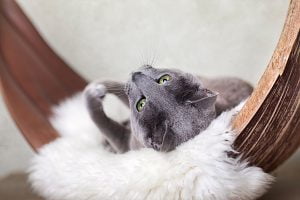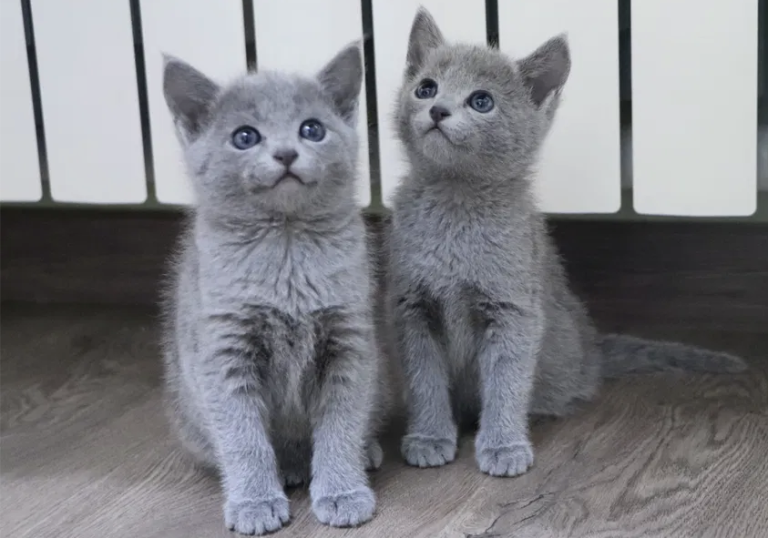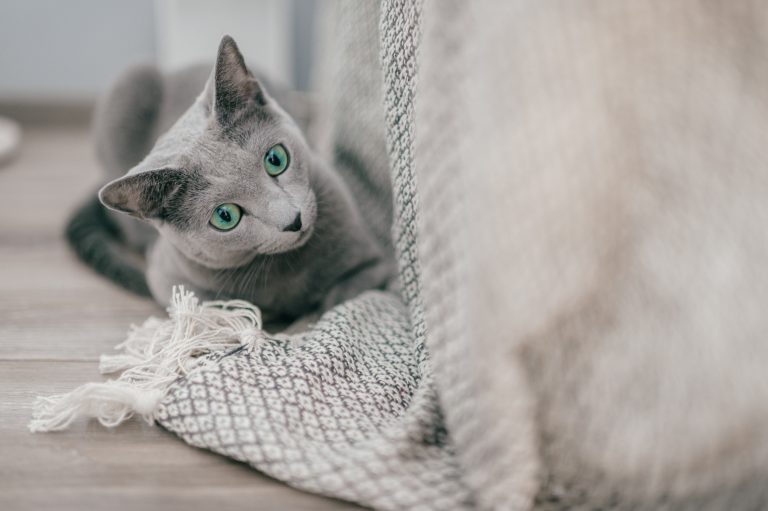When one stumbles upon the price tags attached to purebred kittens, eyebrows often raise in astonishment. Many assume that breeding these feline beauties is a gold mine, a quick way to riches. However, this couldn’t be further from the truth. According to the Cat Fanciers’ Association, one of the world’s largest registries of pedigreed cats, breeding is not a lucrative business but rather a labor of love.
The world of cat breeding is filled with individuals who are deeply passionate about these majestic creatures. For them, breeding is not just about producing kittens for sale; it’s about preserving and enhancing specific breed characteristics, ensuring the health and well-being of each cat, and contributing to the larger feline community. It’s a journey that requires dedication, continuous learning, and significant financial investment.
Behind every kitten’s price tag is a story of sleepless nights, endless research, and countless hours spent ensuring that each cat receives the best care possible. Before diving into the costs and efforts involved, it’s essential to understand the heart and soul that breeders pour into their work. They are not mere sellers; they are guardians of the breed, ensuring that each generation is healthier, happier, and closer to the breed standard.
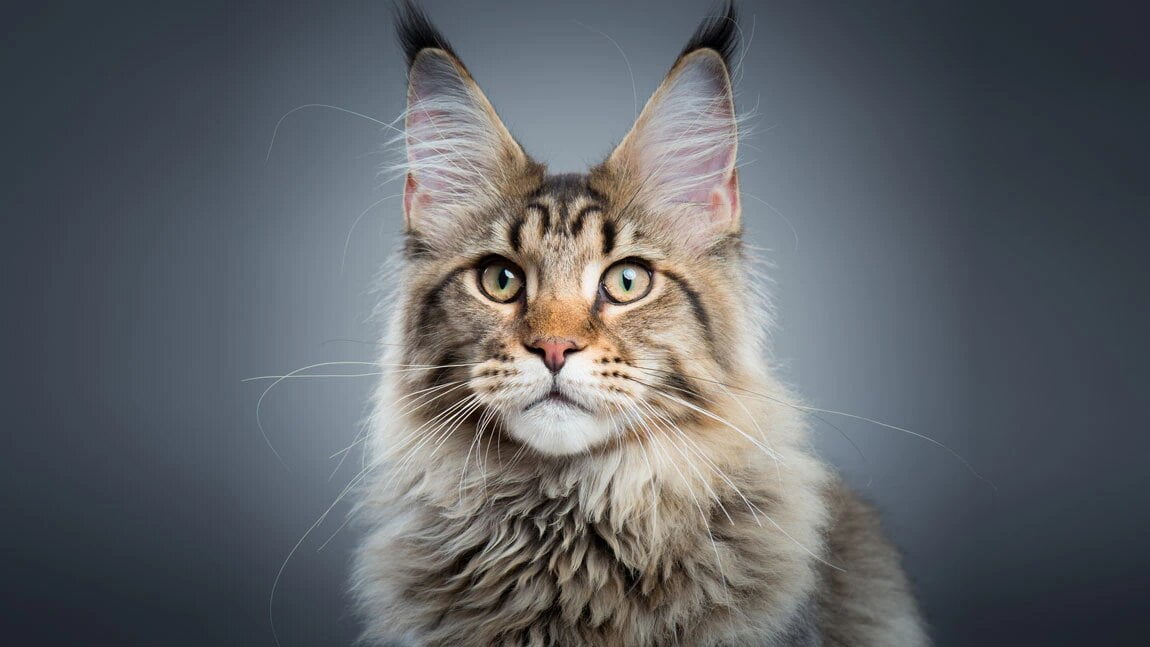
The Journey of Professional Breeding
Breeding vs. Mere Reproduction 🐈
At first glance, one might think that breeding is simply about allowing two cats to mate and then selling their offspring. However, this simplistic view doesn’t capture the essence of professional breeding. While any two cats can reproduce, breeding is a meticulous process that involves careful planning, knowledge, and dedication.
In the world of purebred cats, breeding is about preserving and enhancing specific breed characteristics. It’s not just about producing kittens; it’s about producing quality kittens that adhere to the breed’s standards. The International Cat Association (TICA), a leading authority on feline genetics and health, emphasizes that responsible breeding is rooted in a deep understanding of genetics, health, and the specific traits of each breed.
Understanding Breed Standards 🐈
Every recognized cat breed has a set of standards that describe the ideal physical and sometimes even temperamental characteristics of the breed. These standards are not arbitrary; they are the result of years of observation, research, and understanding of the breed’s history and purpose.
For instance, the sleek body and almond-shaped eyes of a Siamese cat or the dense coat and round face of a Persian are not mere aesthetic choices. They are deeply rooted in the breed’s history, purpose, and genetics. A professional breeder’s goal is to produce kittens that not only look like the ideal representation of their breed but also carry the health and temperament traits that make the breed unique.
The Mission of a Cattery: Beyond Sales 🐈
While it’s true that breeders sell kittens, it’s crucial to understand that for genuine breeders, sales are not the primary mission. The heart of a cattery’s mission is to improve the breed. This means working with rare colors, refining specific features, and ensuring genetic diversity and health.
Every kitten that a breeder decides to sell is a reflection of their dedication to the breed. Often, the best kittens, those that come closest to the breed standard, remain with the breeder to become the next generation’s parents. What’s available for sale are often kittens that, while still purebred and of high quality, may not be used for further breeding.
It’s a continuous journey of learning, refining, and improving. Every litter born is a new chapter in the breeder’s ongoing story of passion and dedication to the breed.
Find out the Russian Blue price on our website.
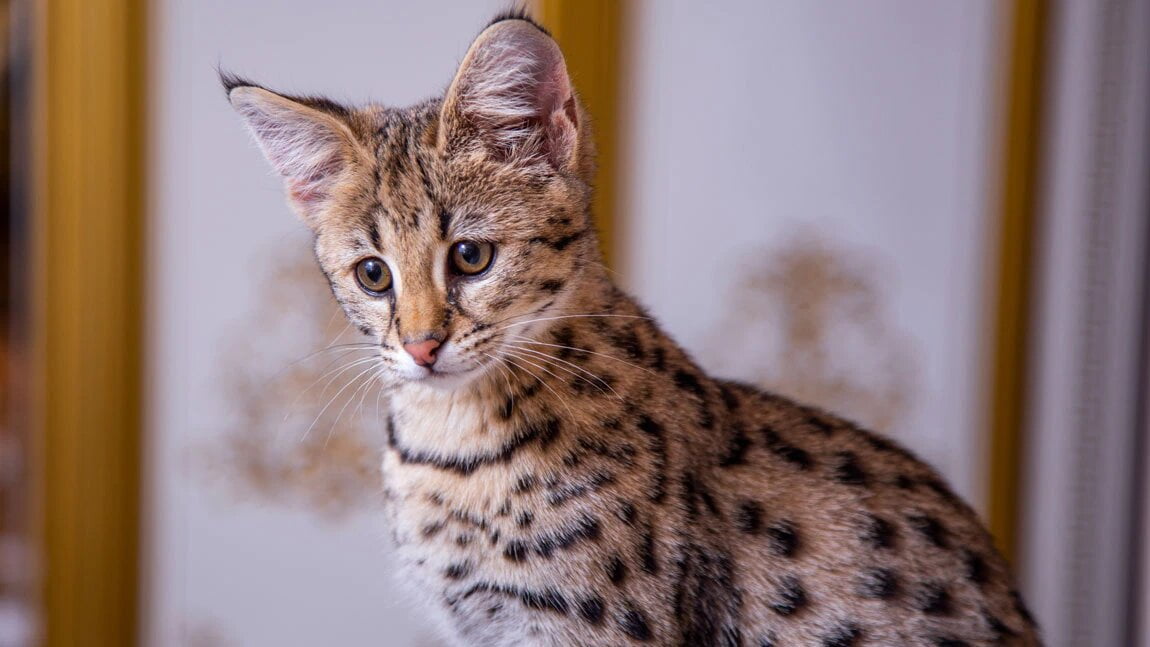
Investment in Producers
Meticulous Selection and Acquisition of Breeding Cats 🐈
The foundation of any reputable cattery lies in its breeding cats, often referred to as “producers.” These aren’t just any cats picked up from a neighbor or a local seller. They are the result of careful research, planning, and often years of waiting. A breeder’s choice in producers will determine the quality, health, and future of their kittens.
Selecting the right producers involves studying their lineage, understanding their genetics, and ensuring they are free from hereditary diseases. It’s not just about their physical appearance but also their temperament, health history, and genetic compatibility with other cats in the cattery.
The High Costs of Acquiring Top-Tier Breeding Cats 🐈
When it comes to acquiring the best of the best, the costs can be staggering. Let’s break it down with some approximate figures:
| Type of Breeding Cat | Cost in US Dollars |
| Local Breed-Class Cat | $1,000 – $3,000 |
| Show-Class Cat (Local) | $2,500 – $7,000 |
| Breed-Class Cat (Import) | $5,000 – $10,000 |
| Show-Class Cat (Import) | $8,000 – $30,000 |
Note: These are approximate figures and can vary based on breed, lineage, and other factors.
Importing cats, especially from renowned catteries abroad, adds additional costs. There are travel expenses, quarantine fees, and import duties. But why do breeders go to such lengths? Because sometimes, to achieve specific breeding goals, like introducing a new color or improving a particular trait, breeders need to look beyond their local pool.
Furthermore, the reputation of the cattery from which a cat is acquired plays a significant role in the cost. Cats from award-winning catteries or those with a lineage of champions command higher prices.
Health and Well-being of the Cats
The Significance of Regular Veterinary Check-ups, Vaccinations, and Emergency Care 🐈
The health of the cats is paramount in a professional breeding environment. It’s not just about producing kittens; it’s about ensuring that every cat and kitten is in optimal health. Regular veterinary check-ups are a staple in any reputable cattery. These check-ups ensure early detection of potential health issues, timely vaccinations, and preventive care.
Vaccinations are crucial to prevent various feline diseases, and their cost can add up, especially when you consider the number of cats in a cattery. Moreover, emergencies can arise at any time. Whether it’s complications during birth, injuries, or sudden illnesses, emergency veterinary care is an unavoidable expense.
To give you an idea, here’s a breakdown of some potential health-related costs:
Healthcare Aspect | Approximate Cost in US Dollars |
Regular Vet Check-up | $50 – $150 per cat |
Annual Vaccinations | $20 – $60 per cat |
Emergency Vet Visit | $100 – $1,000+ depending on the issue |
Specialized Tests & Scans | $100 – $500 |
Note: These are approximate figures and can vary based on location, specific needs, and unforeseen circumstances.
The Importance of Quality Food and Living Conditions 🐈
Just as humans need a balanced diet and a comfortable living environment, so do cats. Quality food is non-negotiable. It ensures the cats have the necessary nutrients for growth, reproduction, and overall health. While there are many commercial cat foods available, breeders often opt for premium or specialized diets, which come at a higher cost.
Living conditions play a significant role in the well-being of the cats. This includes clean and spacious living quarters, play areas, and safe environments for pregnant cats and kittens. Proper bedding, toys, grooming tools, and other essentials also contribute to the costs.
Here’s a glimpse of the costs associated with food and living conditions:
Aspect | Approximate Monthly Cost in US Dollars per Cat |
Premium Cat Food | $30 – $50 |
Toys & Grooming Essentials | $10 – $30 |
Bedding & Litter | $15 – $25 |
Note: These are approximate monthly figures per cat and can vary based on specific needs and choices.
The American Veterinary Medical Association (AVMA) emphasizes the importance of regular veterinary care and proper nutrition for the well-being of pets. As breeders, ensuring the health and happiness of each cat is not just a responsibility; it’s a passion.
Education and Expertise
The Need for Breeders to Have Knowledge in Veterinary Science, Feline Studies, and Genetics 🐈
Breeding is not just about pairing two cats and waiting for kittens. It’s a science, an art, and a commitment. To ensure the health and quality of the cats, breeders must possess a deep understanding of veterinary science. This knowledge helps in early detection of health issues, understanding the nutritional needs of cats, and ensuring their overall well-being.
Feline studies provide breeders with insights into the behavior, physiology, and specific needs of cats. It helps breeders ensure that the cats are not only physically healthy but also mentally stimulated and content.
Genetics plays a crucial role in breeding. Understanding genetics allows breeders to predict the traits of the kittens, avoid potential genetic disorders, and ensure the purity of the breed. It’s the backbone of breeding, ensuring that each generation is better than the last.
The Value of Attending Feline Courses and Studying Specialized Literature 🐈
Education is an ongoing process. The world of feline breeding is ever-evolving, with new research, findings, and methodologies emerging regularly. Attending feline courses keeps breeders updated with the latest knowledge and best practices. These courses often offer hands-on experiences, expert lectures, and opportunities to network with fellow breeders.
Specialized literature, be it books, research papers, or journals, provides in-depth knowledge on specific topics. They are valuable resources that breeders can refer to time and again.
To give you a perspective on the investment in education:
Educational Aspect | Approximate Cost in US Dollars |
Feline Courses | $200 – $1,000 per course |
Specialized Books & Journals | $30 – $150 per book/journal |
Note: These are approximate figures and can vary based on the course, institution, and location.
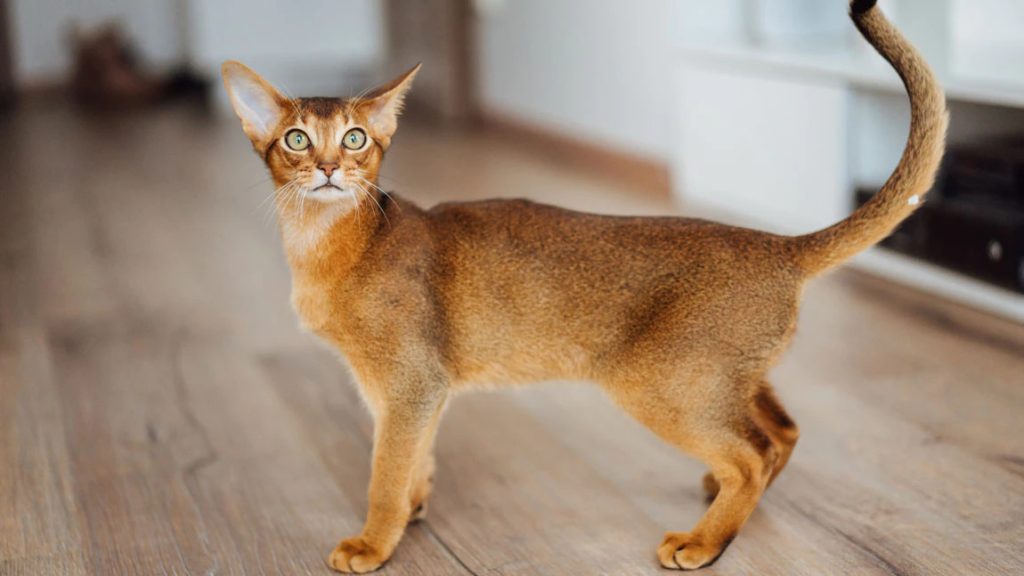
Exhibition and Recognition
The Costs and Significance of Participating in Cat Shows 🐈
Participating in cat shows is an integral part of a breeder’s journey. These exhibitions provide a platform for breeders to showcase their cats, get them judged by experts, and receive feedback. It’s not just about winning titles; it’s about understanding where your breeding program stands and what improvements can be made.
However, participating in these shows comes with its set of expenses. From entry fees to travel and accommodation (especially for international shows), the costs can add up. Here’s a breakdown of potential costs associated with cat shows:
Expenditure | Approximate Cost in US Dollars |
Entry Fees | $50 – $150 per cat |
Travel & Accommodation | $100 – $1,000+ depending on location and duration |
Show Equipment & Supplies | $20 – $200 |
Note: These are approximate figures and can vary based on the show, location, and other factors.
Beyond the monetary aspect, cat shows are significant for breeders as they offer a chance to network with other breeders, exchange knowledge, and even collaborate on future breeding programs.
The Pride and Validation of Having Titled Cats 🐈
Having a titled cat is a testament to a breeder’s dedication, expertise, and the quality of their breeding program. It’s a recognition of the hard work put into ensuring the breed’s standards are met and often exceeded.
Titled cats not only bring pride to the breeder but also add value to the cattery. They serve as a benchmark for potential buyers, indicating the quality they can expect. Moreover, titled cats often have a higher breeding value, contributing positively to the breed’s future generations.
It’s essential to understand that while titles bring recognition, they are not the end goal for genuine breeders. The ultimate aim is always the betterment of the breed, ensuring health, temperament, and adherence to breed standards.
Operational Costs
The Recurring Expenses: Advertising, Website Maintenance, and More 🐈
In today’s digital age, having an online presence is crucial for any business, and cat breeding is no exception. Breeders invest in creating and maintaining a professional website that showcases their cats, shares their breeding philosophy, and provides essential information for potential buyers.
Here’s a breakdown of some of the recurring operational costs breeders face:
Expenditure | Approximate Cost in US Dollars (Annually) |
Website Creation & Hosting | $200 – $1,000 |
Advertising & Promotions | $500 – $2,000 |
Promotional Materials | $100 – $500 |
Professional Photo Sessions | $200 – $1,000 |
Note: These figures are approximate and can vary based on the scale of operations, region, and specific choices made by the breeder.
The Hidden Costs: Travel, Equipment, and More 🐈
While the above costs are somewhat predictable, breeders also face several “hidden” expenses that can significantly impact their budget. These include:
- Travel for Mating: If a breeder doesn’t have a suitable mate for their cat within their cattery, they might need to travel to another city or even country. This can involve transportation, accommodation, and mating fees, which can range from $200 to $1,000 or more.
- Equipment: From specialized cat condos to grooming tools, toys, and more, the equipment costs can range from $100 to $1,000 annually.
- Unexpected Veterinary Expenses: Beyond regular check-ups, emergencies can arise, leading to unforeseen veterinary bills. These can range from $100 to several thousand dollars, depending on the severity of the issue.
- Training & Continued Education: To stay updated with the latest in feline health, genetics, and breeding practices, breeders often attend workshops, seminars, and courses. This can add another $100 to $1,000 to their annual expenses.
In conclusion, while breeding purebred cats might seem like a lucrative business from the outside, the reality is that it’s a labor of love. The costs, both apparent and hidden, can add up quickly. However, for genuine breeders, the joy of advancing the breed, ensuring the well-being of their cats, and providing families with a loving pet is priceless.
The Human Touch
The Emotional and Physical Labor of Breeders 🐈
Breeding is not just a profession; it’s a calling. Behind every purring kitten and majestic cat is a breeder who has poured their heart and soul into their well-being. The emotional labor involved in breeding is profound. Every decision, from selecting the right mate to ensuring the health of a newborn kitten, carries with it a weight of responsibility and care.
Breeders rejoice at the birth of every healthy kitten, but they also experience heartbreak when things don’t go as planned. The loss of a kitten or complications during birth can be emotionally draining. Yet, breeders soldier on, driven by their passion and commitment to the feline world.
The 24/7 Commitment: From Birth to Sale and Beyond 🐈
From the moment a kitten is born, breeders are on the clock. Newborn kittens require round-the-clock monitoring. Feeding, cleaning, and ensuring they are warm and safe become a breeder’s top priorities. Sleepless nights are common, especially in the first few weeks.
As the kittens grow, the challenges change but don’t diminish. Socializing kittens, introducing them to different environments, and ensuring they are mentally stimulated and physically active are all part of a day’s work.
When it’s time for a kitten to find a new home, breeders take great care in selecting the right family. They often provide new owners with guidance, answering questions, and sharing advice on cat care. The sale of a kitten is not the end of the relationship. Many breeders maintain lifelong connections with the families, celebrating milestones and sometimes even providing care advice years down the line.
In essence, breeding is a journey of love, dedication, and relentless commitment. It’s not just about producing beautiful cats; it’s about shaping feline lives, ensuring they are healthy, happy, and loved. The human touch in breeding is what makes all the difference. It’s what transforms a house into a home for these majestic creatures and ensures that every cat has the best start in life.
Bottom Line
The world of purebred cat breeding is a tapestry woven with dedication, passion, expertise, and significant financial investment. It’s far from the misconceived notion of a quick-profit business. Instead, it’s a labor of love that demands round-the-clock attention, continuous learning, and an unwavering commitment to the well-being of these majestic creatures.
Every purebred cat is a testament to the countless hours, sleepless nights, and meticulous care provided by breeders. From the initial stages of selecting the right mating partners to the final moments of finding a loving home for a kitten, breeders are involved in every step, ensuring that each cat gets the best start in life.
The costs associated with breeding are vast and varied, encompassing not just monetary expenses but also the emotional and physical toll on breeders. Whether it’s the high costs of acquiring top-tier breeding cats, the recurring expenses of maintaining a cattery, or the emotional labor of ensuring each kitten’s well-being, breeders are constantly investing in their passion.
So, the next time you come across a price tag on a purebred cat, remember the journey behind that number. It’s not just a reflection of the cat’s pedigree or beauty but also a testament to the dedication, expertise, and love of the breeder behind it.
Let’s take a moment to appreciate the tireless efforts of breeders and recognize that the price of a purebred cat is a small token in comparison to the invaluable contributions they make to the feline world. After all, behind every purr, every graceful stride, and every affectionate nuzzle is a breeder’s unwavering commitment to excellence.

